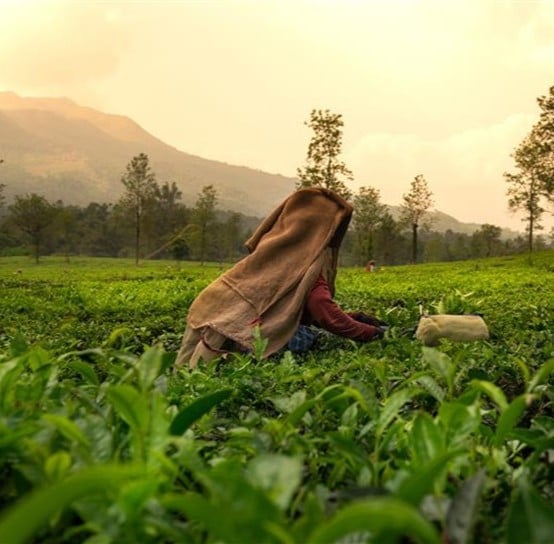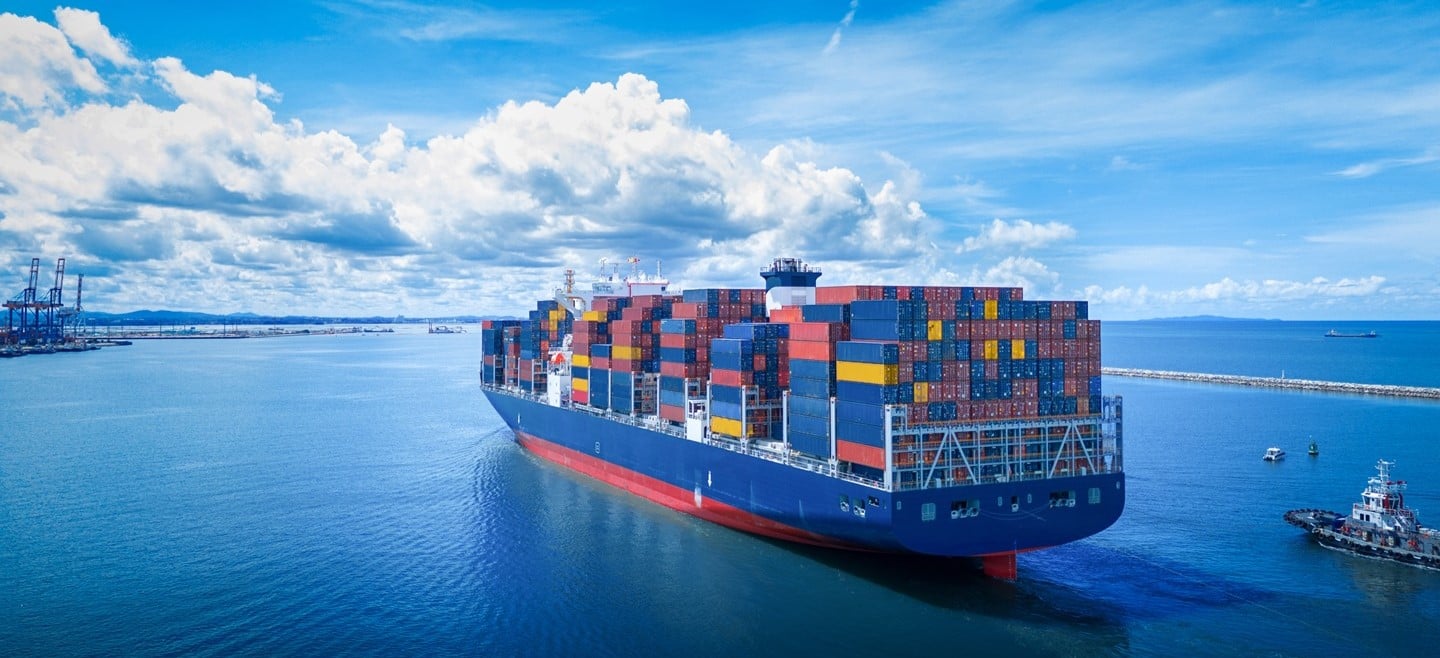-
Business Consulting
Our business consulting specialists offer a comprehensive blend of strategic advisory services. We assess the business, industry, operating model, synergy, skill sets and vision of the organisation and recommend the way forward
-
Digital Natives
Unlock growth with Grant Thornton Bharat's Digital Natives solutions. Customised support for tech-driven companies in healthcare, gaming, and more.
-
New and Emerging Tech
In a world where change is constant, staying ahead means staying adaptable. At Grant Thornton Bharat, we believe the future belongs to those who can evolve quickly, leveraging new and emerging technologies not just as trends, but as strategic levers for transformation.
-
Finance Transformation
Using a holistic approach, integrating digitalisation and digital transformation we help clients achieve transparency, control, governance, and faster decision making through real-time data within the business.
-
Human Capital Consulting
Our Human Capital Consulting team harnesses technology and industry expertise to assist in constructing adaptable organisations with transparency, fostering productive and value-driven workforces, and inspiring employees to engage meaningfully in their tasks.
-
Production Linked Incentive Scheme
Production-linked Incentive Scheme by the Indian government is aimed at boosting manufacturing. Grant Thornton Bharat offers varied services across sectors to help businesses avail of this scheme.
-
Public Sector Advisory
Our Public Sector Advisory team has focused streams, aligned with the core priorities of the Government of India. We are responsible for providing innovative and customized technical and managerial solutions.
-
Tech Advisory
We have amalgamated Digital Transformation, IT Advisory & Information Management and Analytics into a new offering, DigiTech.

-
Direct Tax services
Our tax specialists offer a comprehensive blend of tax services, tax litigation, regulatory and compliance services, helping you navigate through complex business matters.
-
Indirect Tax Services
Get tax services by leading tax firm Grant Thornton India. Our indirect tax services include consulting, compliance and litigation services for corporate, international and transaction tax
-
Transfer Pricing
Our transfer pricing services experts provide a range of services from provision of APA services to handling large global assignments including Country by Country reporting.
-
US Tax
At Grant Thornton, we help individuals and dynamic companies deal with US tax laws, which are one of the most complicated tax legislations across the world.
-
Financial Services - Tax
Best financial consulting services, tailored for small and large businesses by the experts having comprehensive knowledge of domestic laws and access to multifaceted tools to provide a valuable results.
-
Financial Reporting consulting services
Our experts have significant hands-on experience in providing IFRS/US GAAP services, end-to-end solutions and support services to fulfil financial reporting requirements.
-
Fund accounting and financial reporting
International operations often lack standardisation and have varied local reporting formats and requirements. Our experts can offer proactive insights, practical guidance, and positive progress and help meet regulatory timeframes.
-
Compliance and Secretarial Services
Our experts can assist in overhauling the entire compliance machinery of the organisation through evaluation of the applicable statutory obligations, monitoring of adequate governance controls, reporting and providing ongoing support.
-
Global People Solutions
As businesses transcend borders, both domestic and global considerations need equal attention. Our interim CFO and financial controller support services help organisations meet the business vision.
-
Finance and accounting outsourcing
Our accounting experts assist organisations in managing their accounting and reporting. Our dedicated Integrated Knowledge and Capability Centre (IKCC), allows us to service both the domestic and global markets efficiently and cost-effectively
-
Compliance Management System
We have automation solutions for you that will allow meeting government requirements and remain diligent, which when failed, can lead to penalties and loss in revenue.
-
Centres of Excellence
Strategic business hubs for global delivery
-
Global compliance and reporting solutions
At Grant Thornton Bharat, we meet the challenges of our clients and help them unlock their potential for growth. Our professionals offer solutions tailored to meet our clients’ global accounting and statutory reporting requirements. With first-hand experience of local reporting requirements in more than 145+ locations worldwide, we provide seamless and consistent international service delivery through a single point of contact.
-
Related-party transaction governance
Related-party transactions (RPTs) are common in business structures where organisations engage with their group entities, such as holding companies, subsidiaries, associate concerns, joint ventures, or key management personnel, for various operational or financial purposes.
-
Family Offices and Private Client Services
Grant Thornton Bharat Private Client Services offers tailored consulting for family-owned businesses, focusing on governance, compliance, tax, succession planning, and family office structuring to sustain wealth and preserve legacies across generations.
-
Labour codes
Labour codes solutions help you transition through the new legislation. At Grant Thornton, we help businesses divide their approach to make sure a smooth transition.
-
Alerts
At Grant Thornton India, with the help of our tax alerts, we help to provide updates on how to minimise your tax exposure and risks.
-
India investment roadmap
The India Investment Roadmap resource is designed to navigate the complexities of Indian tax and regulatory laws, providing seamless guidance and a comprehensive set of solutions to ensure a smooth process for investors aiming to establish or expand their presence in India.
-
CFO Solutions
Our comprehensive suite of solutions for CFOs

-
Crisis and Resilience
Cyber risks, financial crime and regulatory scrutiny demand strong preparedness. Our forensic team helps organisations build robust crisis and resilience frameworks to protect value and maintain trust.
-
Cyber
In today’s time, businesses have gone through large transformation initiatives such as adoption of digital technologies, transition to cloud, use of advanced technologies et al.
-
ESG consulting
Grant Thornton Bharat offers holistic ESG consulting solutions for sustainable business outcomes. With industry expertise and AI technology, we drive long-term value.
-
Risk analytics
Grant Thornton Bharat’s CLEARR Insights is a state-of-the art data analytics platform that will help you in seamless data analysis and efficient decision-making.
-
Forensic & Investigation Services
The team of forensic consulting services experts consists of the best intelligence corporate experts, and fraud risk, computer forensic experts to deliver most effective solutions to dynamic Indian businesses.
-
Risk Optimisation
Our Governance, Risk and Operations (GRO) services encompass Internal Audit, Enterprise Risk Management, Internal Financial Controls, IT advisory, Standard Operating Procedures and other services.

-
Deal Advisory
Unlike other M&A advisory firm in India, we offer deal advisory services and work exclusively with controlled and well-designed strategies to help businesses grow, expand and create value.
-
Due Diligence
Grant Thornton’s financial due diligence services are aimed at corporate looking for mergers and acquisitions, private equity firms evaluating investments and businesses/promoters considering sale/divestment.
-
Debt & Special Situations Solutions
Grant Thornton Bharat offers specialist debt and special situations consulting services, including restructuring, insolvency, and asset tracing solutions.
-
IPO Services
Grant Thornton Bharat’s IPO services ensure optimal scaling of organisations in the financial markets
-
Transaction Tax Services
Our transaction tax experts understand your business, anticipate your needs and come up with robust tax solutions that help you achieve business objectives ensuring compliance and efficiency
-
Overseas Listing
Overseas listing presents a perfect platform for mid-sized Indian companies with global ambitions. Grant Thornton’s team of experts in listings, work closely with clients during all stages.
-
Valuations
Valuation services are central to every deal lifecycle — from pre-deal strategy to post-transaction integration. Grant Thornton Bharat delivers precise, compliant, and defensible valuations across regulatory, financial reporting, and transaction contexts. Our experts apply deep technical and sector insights to ensure fair value, mitigate risk, and support decision-making for M&A, private equity, litigation, and intangible assets. Every deal begins with the right value — we help you discover it.
-
Financial Reporting Advisory Services
Grant Thornton Bharat Financial Reporting Advisory Services offer end-to-end solutions for complex financial requirements, including GAAP conversions, IPO support, and hedge accounting advisory, ensuring accurate financial reporting and compliance.
-
Financial Statement Audit and Attestation Services
Grant Thornton Bharat offers customised financial statement audit and attestation services, ensuring impeccable quality and compliance with global standards. Our partner-led approach, technical expertise, and market credibility ensure effective solutions for your business needs.

- Agriculture
- Asset management
- Automotive and EV
- Banking
- Education and ed-tech
- Energy & Renewables
- Engineering & industrial products
- Fintech
- FMCG & consumer goods
- Food processing
- Gaming
- Healthcare
- Urban infrastructure
- Insurance
- Media
- Medical devices
- Metals & Mining
- NBFC
- Pharma, bio tech & life sciences
- Real estate and REITs
- Retail & E-commerce
- Specialty chemicals
- Sports
- Technology
- Telecom
- Tourism & hospitality
-
 Thought leadership Co-lending in India: Expanding credit access for MSMEsIn today’s rapidly evolving financial landscape, co-lending has emerged as a key enabler of credit expansion in India, facilitating partnerships between banks and non-banking financial companies (NBFCs) to extend credit more efficiently to underserved segments.
Thought leadership Co-lending in India: Expanding credit access for MSMEsIn today’s rapidly evolving financial landscape, co-lending has emerged as a key enabler of credit expansion in India, facilitating partnerships between banks and non-banking financial companies (NBFCs) to extend credit more efficiently to underserved segments. -
 Article Why India’s financial inclusion journey needs to focus on equity and access to creditFinancial services have expanded over a decade, giving millions access to bank accounts and digital payments. But true empowerment needs to reach every corner of the country if growth is to be long-term and sustained
Article Why India’s financial inclusion journey needs to focus on equity and access to creditFinancial services have expanded over a decade, giving millions access to bank accounts and digital payments. But true empowerment needs to reach every corner of the country if growth is to be long-term and sustained -
 Thought Leadership Competitive and sustainable agriculture & food processing in KeralaThe economy of Kerala is primarily driven by the services sector, which contributes 66% to the Gross State Domestic Product (GSDP).
Thought Leadership Competitive and sustainable agriculture & food processing in KeralaThe economy of Kerala is primarily driven by the services sector, which contributes 66% to the Gross State Domestic Product (GSDP). -
 Article Economic Survey 2024-25: Deregulation, investment and innovation for a Viksit BharatIndia's economic growth remains for a steady trajectory with real GDP expected to grow at 6.4% in FY25 and in the range of 6.3%-6.8% in FY26, reflecting resilience despite global uncertainties.
Article Economic Survey 2024-25: Deregulation, investment and innovation for a Viksit BharatIndia's economic growth remains for a steady trajectory with real GDP expected to grow at 6.4% in FY25 and in the range of 6.3%-6.8% in FY26, reflecting resilience despite global uncertainties.
-
Quarterly Aviation Insights
Explore the latest trends in aviation industry with Grant Thornton Bharat’s Quarterly Aviation Insights. Stay updated on industry growth, market shifts & key developments.

-
Freight Forward: Quarterly insights
Logistics sector in India is adapting to rising costs, global disruptions, and the growing urgency of sustainability.
-
India-UK
India-UK
-
India - Japan
India - Japan

A global trade reset is underway
The world's supply chains are on the move—and this time, it's not just about cost or efficiency. It's about trust, traceability, and the rules. With the US doubling down on tariffs against China but pressing pause on new reciprocal measures, a rare window has opened for economies like India to stake their claim in the next phase of global trade.
India is in the spotlight—but playing the origin game right is the only way to win.
Reciprocal Tariffs on hold: Strategic breather or tactical delay?
The "reciprocal tariffs" concept gained prominence under the Trump administration—an approach that sought to mirror tariffs imposed on American goods by other countries. While limited in execution, the idea resonated with domestic constituencies. Invoking emergency powers under the International Emergency Economic Powers Act (IEEPA) and the National Emergencies Act, Trump ordered additional ad valorem tariffs on all articles imported into the US customs territory, including those from India.
However, in a significant shift from the earlier aggressive trade policy, Trump recently announced a 90-day pause on implementing additional reciprocal tariffs. While maintaining high tariffs on Chinese imports, this recalibration signals strategic reconsideration amidst global supply chain challenges and evolving geopolitical priorities.
Tariffs under Section 301 of the Trade Act of 1974 on Chinese imports remain firmly in place—and are expanding. These levies primarily target strategic sectors such as semiconductors, critical minerals, and clean tech components. The objective is clear: reduce dependency on China and shift the supply chain locus toward more aligned economies.
Lessons from previous Trump Tariff era
The tariff escalation during the previous trump administration provided critical compliance lessons for global exporters and importers, particularly regarding origin-linked scrutiny. A key concern was the rise in transshipment and origin fraud, where goods manufactured in China were rerouted through third countries like Vietnam or Mexico to circumvent US tariffs. These practices invited intensified enforcement by the US Customs and Border Protection (USCBP), often resulting in retroactive duty assessments and punitive actions.
Additionally, the US significantly increased FTA audits, especially under the United States-Mexico-Canada Agreement (USMCA), focusing on verifying the legitimacy of Certificates of Origin. In many cases, incorrect or incomplete origin declarations led to denial of preferential treatment and imposition of duties. Authorities also began applying the substantial transformation test more stringently—mere assembly, packaging, or marginal processing in intermediary countries was insufficient to confer new origin status. This led to a surge in litigation as importers contested the imposition of tariffs or denial of FTA benefits.
However, legal success largely hinged on the quality and credibility of the place of origin documentation and compliance trail maintained by the parties involved. These developments underscore the growing importance of robust origin compliance mechanisms in a tariff-sensitive trade environment.
Opportunities for India
The continuation of high US tariffs on Chinese goods and a pause on new reciprocal measures opens a unique window for India—if it can act swiftly and strategically.
The ongoing realignment of global supply chains—accelerated by sustained US tariffs on Chinese goods—has opened up a significant opportunity for India to position itself as a viable alternative sourcing destination. With US importers actively seeking to diversify away from China, several of India's manufacturing sectors—such as electronics, pharmaceuticals, textiles, and auto components—are well-placed to benefit from this shift.
However, the transition is not automatic. For India to secure a meaningful place in these reconfigured value chains, it must offer more than just capacity—it must deliver competitive costs, consistent product quality, and supply reliability. Predictable and transparent customs procedures are essential, minimising bottlenecks and inspiring confidence among international buyers.
Most critically, proven compliance with Rules of Origin (RoO) and the ability to produce valid origin certifications under relevant FTAs will determine whether Indian exports can benefit from preferential access in major markets like the US. In this evolving landscape, India's ability to align manufacturing strength with trade compliance and facilitation will be key to capturing the supply chain shifts underway.
Why compliance is the new competitiveness
A critical pillar of India's trade strategy lies in the strategic role of origin compliance. While FTAs and preferential schemes—such as a potential reinstatement of the Generalised System of Preferences (GSP) or upcoming IPEF-linked benefits—offer enhanced market access, these advantages can only be unlocked through strict adherence to Rules of Origin (RoO).
At the heart of this is the requirement that goods undergo a substantial transformation in India to qualify as originating products. This means that simple assembly or superficial value addition is insufficient; the transformation must be meaningful and meet the criteria defined under each trade agreement. To substantiate such claims, exporters must maintain a robust documentary trail that includes cost sheets, bills of materials, production records, and process documentation.
Equally important is a sound understanding of FTA-specific Product-Specific Rules (PSRs), such as the Change in Tariff Heading (CTH), Regional Value Content (RVC), or specific processing rules. These technical criteria vary by agreement and product and are critical for accurate origin declarations.
Moreover, leveraging customs trade facilitation tools—like obtaining advance rulings on classification or the place of origin, and enrolling in the Authorised Economic Operator (AEO) scheme—can enhance predictability, minimise border delays, and improve credibility with customs authorities. In an increasingly compliance-driven trade landscape, origin verification is not just a procedural formality but a strategic determinant of market access, cost efficiency, and risk mitigation.
Aligning customs and trade strategy
As India expands its global trade footprint through a growing web of FTAs—such as the India-UAE CEPA, India-Australia ECTA, and upcoming agreements with the UK and EU—it must align its customs infrastructure with its broader trade strategy. Preferential access is only meaningful if usable, predictable, and fast.
This starts with digitising and streamlining the Certificate of Origin (CoO) process through platforms like ICEGATE and the DGFT portal. Equally important is the robust implementation of CAROTAR, 2020, backed by industry awareness and capacity-building initiatives to help exporters navigate origin requirements confidently.
At a strategic level, India's negotiators must prioritise simplified and harmonised Rules of Origin, mutual recognition of standards, and regional cumulation provisions in ongoing and future FTAs. Simultaneously, targeted support for high-potential sectors—such as electronics, pharma, and textiles—will be critical in enhancing export readiness and origin compliance.
For exporters, this shift requires a proactive approach:
- Conduct RoO impact audits to assess FTA eligibility.
- Upskill supply chain and documentation teams on product-specific origin rules and certification protocols.
- Rethink sourcing models to better meet RVC thresholds, including exploring regional cumulation.
- Leverage facilitation tools such as advance rulings, AEO certification, and digital customs platforms.
Together, these steps form a compliance-first, trade-ready framework that reduces risk, enhances credibility, and ensures Indian exports are not just competitive but preferential.
Conclusion: From trade tension to trade transformation
The current global trade environment—marked by shifting tariffs, paused retaliatory measures, and ongoing geopolitical decoupling—offers India a rare strategic window. However, grabbing this opportunity will not hinge solely on producing more—it will depend on exporting smarter.
India must double down on customs modernisation, origin compliance, and FTA utilisation to anchor itself as a reliable, rule-abiding trade partner. In an era where tariffs are increasingly a function of origin, compliance is competitiveness.
Dipika Shetye, Manager, Tax, Grant Thornton Bharat, has also contributed to this article.
This article first appeared in the Taxmann on 22 April 2025.
